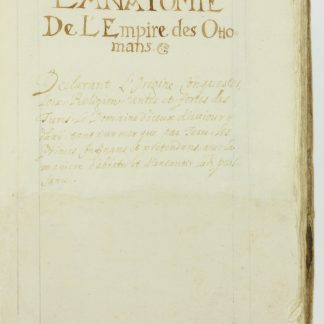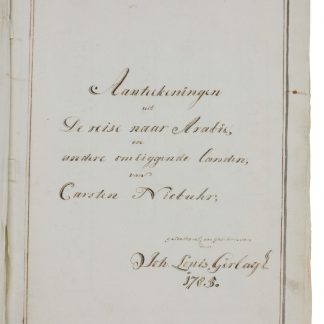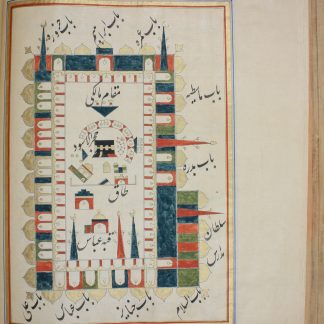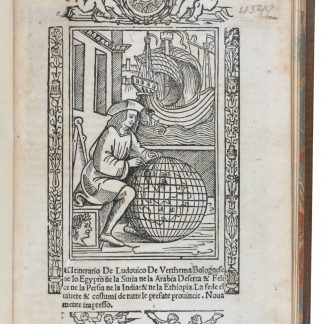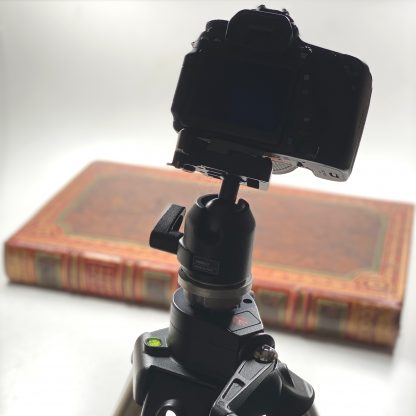
A Turkish Sufi in 18th century Medina
Tayyibetü'l-ezkâr fî-Medinetü'l-envâr [Beautiful memories in the City of Light].
8vo (138 x 209 mm). 26 ff. Ottoman Turkish manuscript on watermarked paper. Contemporary leather-backed marbled boards with flap, gold-flecked endpapers, spine reinforced with blue cloth.
€ 25,000.00
A Turkish Sufi's account of his pilgrimage to Medina. Written in Ottoman Turkish, the manuscript details the experiences of the author, Ahmed Sikârîzâde, in his travels in the Arabian Peninsula from 1791/92 CE. Little is known of Sikârîzâde's youth, but by the 1790s he was well established in the dervish lodge of Koca Mustafa Pasha Mosque in Istanbul, and spent roughly a year on pilgrimage in 1791. His record, which was especially focused on the management of Muslim holy buildings and ceremonies, is an important and uniquely detailed account of Medina in the late 18th century.
Here copied by the scribe Muhammad Sa'id, Sikârîzâde's work describes, down to the numbers of lamps and pillars, the architecture of the Prophet's Mosque (its overall size being described by comparison to the Hagia Sophia), and the tomb of Aisha bint Abi Bakr and the Prophet, especially focused on its maintenance under the care of volunteer cleaners. Other sections detail the management of ceremonies, from lighters of lamps to schedules of prayers between different Muslim sects sharing mosques and holy sites. For example, Sikârîzâde describes cleaners and caretakers, down to the nicknames of individual servants, and carefully notes local customs, such as Arab tribes from Yemen, Mecca, Yanbu, Taif, and gathering in Medina to participate for three days and three nights during the "Rajabiyyah" on the 23rd day of the month of Rajab. Further sections are dedicated to Friday prayers and Mawlid ceremonies, all told with the eye of a deeply devout man very aware of the management of religious events and festivals from personal experience. The detail is impressive, and the reflection of the curious mind behind it even more so; few travelogues of pilgrims go into such detail about the city, its architecture, and its citizens, and the ceremonies in which these three aspects meet.
Covers a touch worn, spine reinforced; gentle soiling, and few small dampstains. In good condition.
Tayyibetü’l-ezkâr by Hasan Tahsin (1898), A Catalogue of the Turkish Manuscripts in the John Rylands University Library at Manchester by Jan Schmidt (2011), Nurlu Medine’den hatiralar by Ibrahim Hakki Uzun (2022).

